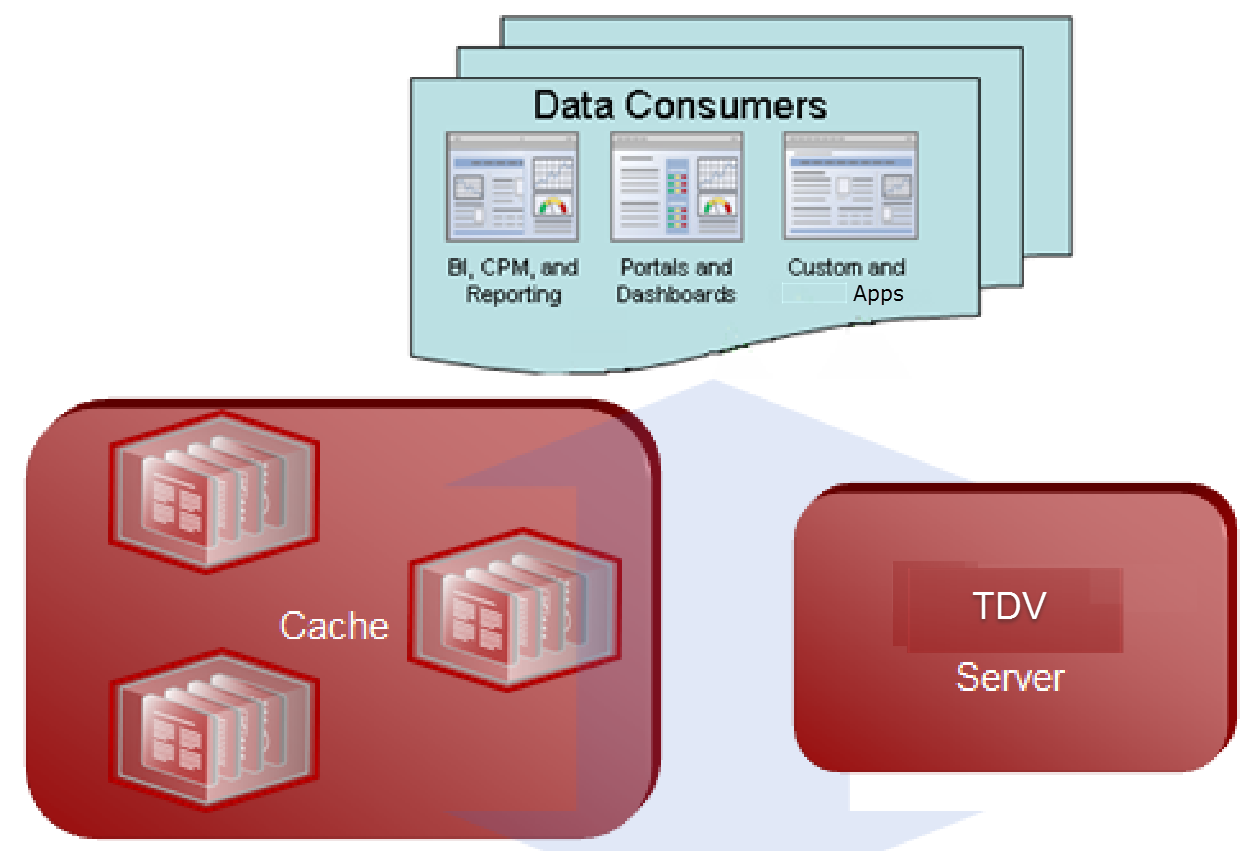Overview of TDV Caching
TDV caching is a feature that can improve the responsiveness of data access in your enterprise. Caching features can help you quickly build data caches that complement data virtualization and improve reporting. Working within TDV and Studio, you can access data and metadata from across data repositories, whether they be applications, databases, or data warehouses. You can then use TDV to create data caches. From the data caches, you can consume the cached data for client activities such as data analysis.
TDV caching is a feature of TDV and uses the Studio user interface. TDV caching is delivered with TDV, and contains all of the software needed to implement TDV caching in your IT environment.
The following illustration provides a simplified representation of caching with TDV.
Key Features and Benefits of Caching Data
Many business applications are being developed and deployed on multi-tier environments involving browser-based clients, web application servers, and databases. These applications require data on demand. Caching is an effective way to achieve high scalability and performance. Caching provides:
• Reduced impact on operational data stores.
• Redirection of reporting and analytic queries to cache data stores, eliminating their impact on the performance of OLTP systems.
• Improved performance of TDV requests.
• Materialization of intermediate results (expensive to compute) boosting the performance of requests that depend on them.
• More flexibility.
• The opportunity to move cached data result sets to systems that provide optimal processing and analysis.

